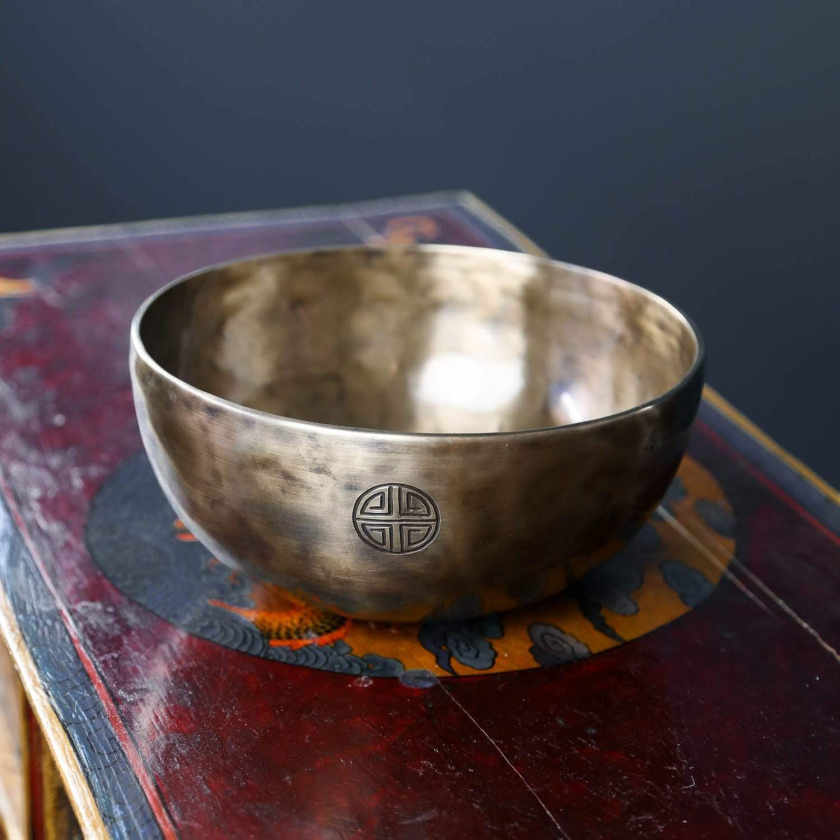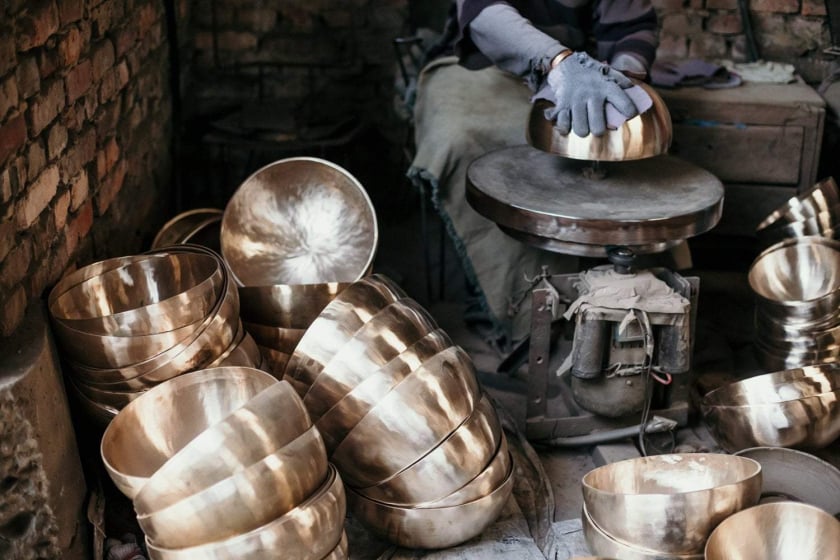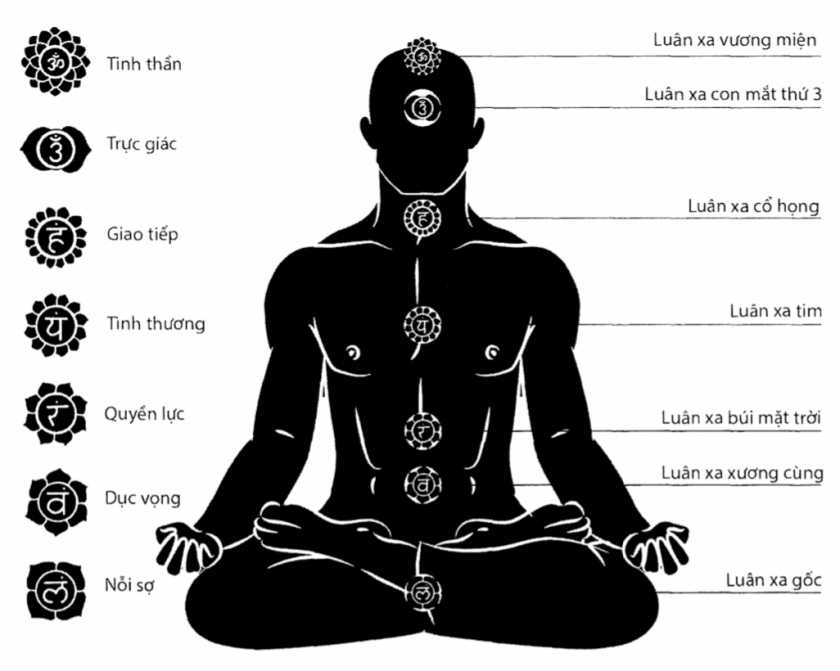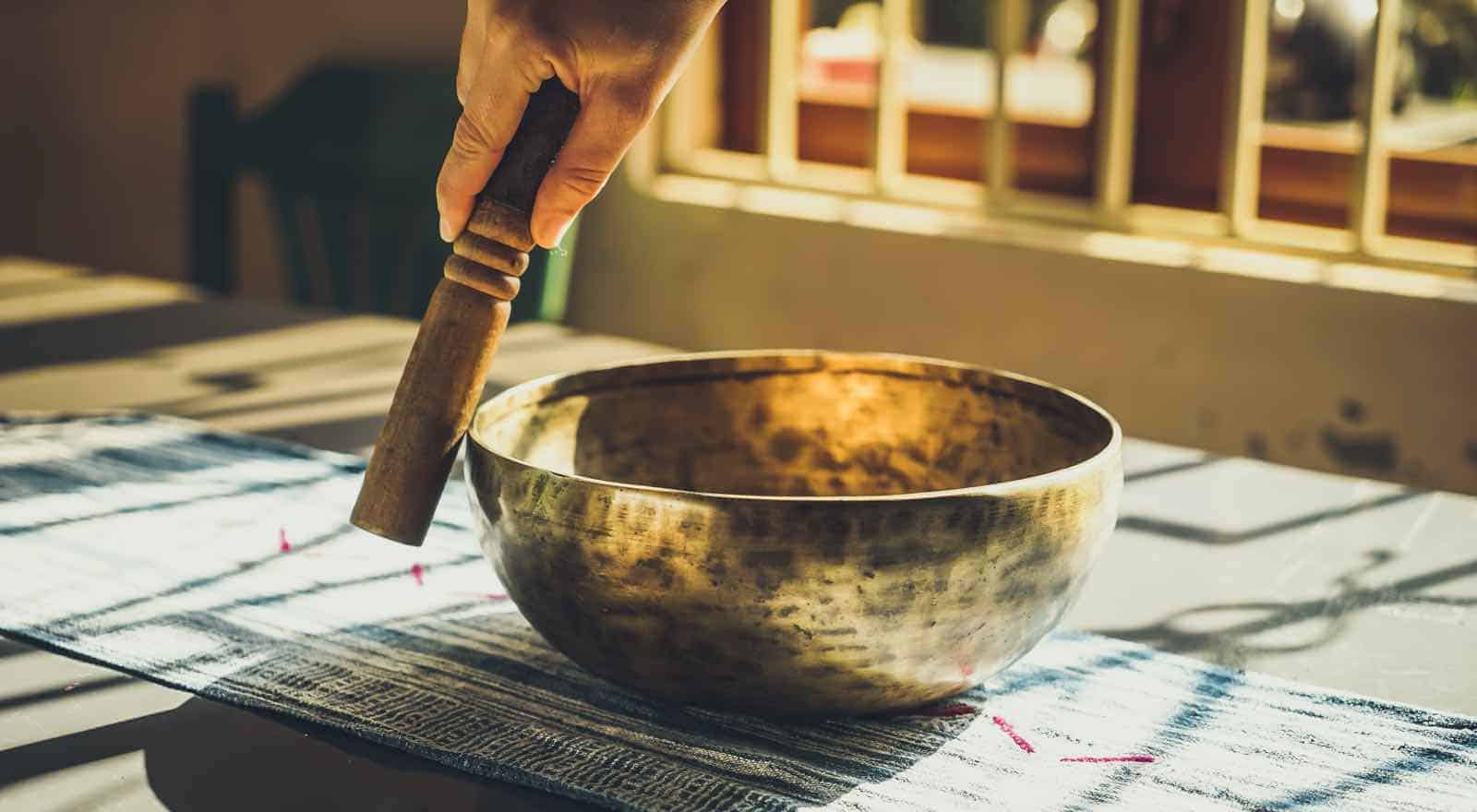If you have ever heard about singing bowl therapy, 90% of you know it through Yoga or meditation. However, this article will help you understand the basics of this "mysterious" and "magical" bowl, without necessarily relating it to Yoga, meditation, or even Buddhism.
From India, to become the bell of the Himalayas
Singing bowl, also known as "singing bowl" in English. In fact, there is no document recording the first time the singing bowl was invented, only that it existed before Yoga, before Buddhism was formed and developed.
What history records is that the swinging bell originated in India - the country that later "gave birth" to Yoga. Around the 8th century, swinging bells began to penetrate deep into the Himalayas, accompanying the preaching journey of Buddha Shakyamuni - Guru Padmasambhava.
The original functions of the swinging bell were very diverse, associated with people's daily activities - from cooking, storing food, making wedding gifts, making offerings..., to ringing the bell, chanting sutras or supporting meditation. At the same time, ancient therapists also discovered the "miraculous" benefits that the sound and vibration of the bell brought, from which they combined swinging bells in therapies to relax, relieve pain or cure diseases.

In a bell shop in Kathmandu, Nepal
Singing bells can be divided into two types: antique singing bells and new hand-made singing bells. Those that are more than 30 years old are considered antique singing bells, with superior sound, vibration and therapeutic properties. These are also the type that has become rare in modern times.
Due to the scarcity of antique swinging bells, hand-made swinging bells were born. With hand-made bells, the size, material and design of each bell will be flexibly adjusted by the craftsman, depending on the purpose of use of that bell: for deep therapy, as a decorative gift or to support meditation...

The Full Moon bell series is crafted by craftsmen directly under the full moon.
Nowadays, hand-made swinging bells are mainly made in the capital city of Kathmandu, Nepal. Through trade, the use of swinging bells has become popular in the Himalayan countries - especially in places where Buddhism is prevalent, such as Tibet. That is why the world often calls this bell "Nepal swinging bell" or "Tibetan swinging bell". But based on the origin of the bell, perhaps the most accurate name for it isHimalayan swinging bells.
Unlike other types of bells, Himalayan swing bells are not simply used to strike or rotate, but can be combined with many at the same time or combined with water or sand (contained inside the bell) to create different sound effects.
Why is swinging kettlebell therapy effective?
To understand the "magical" uses of swinging bells, first, it is necessary to know how bells are made.
During the manufacturing process, the bell is made from 2 to 12 metal elements. These alloys are heated, poured into molds, and cooled. Then they are heated again; the craftsman will use a hammer to shape them. Finally, the bell is polished and the finished product.

Nepalese craftsman in the process of making a swing bell

Hand-cranked bells
The number of metal elements is decided by the manufacturer, but for bells intended for therapeutic purposes, the number of base metal elements is usually seven. These seven precious metals correspond to the seven planets, seven musical notes, and seven human chakras.
- Lead, representing Saturn, corresponds to the Do note and the 1st chakra.
- Iron, representing Mars, corresponds to the note Re and the 2nd chakra
- Tin, representing Jupiter, corresponds to the E note and the 3rd chakra
- Yellow, representing the Sun, corresponds to the Fa note and the 4th chakra.
- Copper, representing Venus, corresponds to the Sol note and the 5th chakra.
- Silver, representing the Moon, corresponds to the La note and the 6th chakra.
- Mercury, representing Mercury, corresponds to the Si note and the 7th chakra.
But why link the swinging bell with the 7 chakras in the human body?
According to the bookLaw of Mindby author Ngo Sa Thach (Dan Tri Publishing House, 2021), "Chakras are the natural energy vortex gates of humans, which are also the largest acupuncture points on the body - such as Bai Hoi, An Duong, Dan Trung, Hoi Am, Ngoc Cham,... A healthy body is a body with a steady flow of energy, without blockage. The chakras rotate in the right direction, balanced with each other, no energy gate is overactive or weakened.
If an imbalance occurs, the blocked energy flow will cause pain in the blocked area. In addition, it also causes poor health, emotional changes, irritability, and mental clarity.
By converging precious metals corresponding to the chakras, when struck, the swinging bell will create sound vibrations that can resonate and harmonize the flow of energy in the body. The chakras are gradually opened; the blocked energy blocks are gradually released; the vibrations of each cell gradually return to a harmonious frequency. In other words, a swinging bell therapy session can help people relax; eliminate stress and anxiety in the mind; at the same time, the blood in the body is purified and circulated.

The position and role of the 7 chakras in the human body (in order from bottom to top)
When medical facilities were still poor, the Nepalese people soon understood the important role of chakras in the body, and so they used singing bowls as a simple yet effective method to treat both physical and mental problems.
Singing Bowl Therapy in Vietnam
To date, Om Healing is still the most prestigious singing bowl therapy center in Vietnam, with facilities in Ho Chi Minh City and Hanoi. The founder of Om Healing, Ms. Hien Tran, is also the first person to apply and develop singing bowl therapy in Vietnam. ThroughOm Healing, many workshops on swinging bells were held, with the participation of Mr. Santa Ratna Shakya - one of the largest swinging bell manufacturers in Nepal, and also the creator of the Full Moon swinging bell line.

Photo: FB Swing Bell Therapy

Photo: FB Swing Bell Therapy
In the past two years, under the impact of the Covid-19 epidemic, the need to "heal" the human spirit has become more urgent, which is also the time when swinging bell therapy has become widely known to Vietnamese people. Not only Om Healing, many health centers and spas in major cities in the country have been adding swinging bells to their treatment programs. Some high-end resorts have also applied swinging bell techniques to restore Body-Mind-Spirit, such as An Lam Retreats, Six Senses Ninh Van Bay...

Singing Bell Therapy at Six Senses Ninh Van Bay
In addition to therapy at the center, you can still practice singing bowls in your daily life. A Himalayan singing bowl - no matter how small or large - has the ability to bring relaxation, comfort and balance to the user.
The swing bells produced in Nepal when arriving in Vietnam have a minimum price of about 600 thousand VND, the price will increase depending on the size or material. You can find the bells at stores specializing in distributing Himalayan products, or at the store system.A Little LeafFor swing bells, you should buy them at the store so you can directly check the product quality.
Before concluding this article, let's take a minute with Travellive - take a deep breath, relax, and try to feel the sound vibrations that a "tiny" swinging bell can bring.
Hope you have a relaxing experience!



























